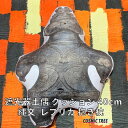Introduction
Aomori Prefecture, located at the northernmost tip of Honshu, is a land rich in nature, surrounded by the Sea of Japan, the Pacific Ocean, and the Tsugaru Strait on three sides. The changing seasons are vivid, showing different expressions throughout the year: cherry blossoms in spring, deep green in summer, autumn foliage, and snowy landscapes in winter. Furthermore, historical structures from various eras, ranging from Jomon period ruins to Edo period castles and Western-style architecture from the Meiji era onwards, are scattered throughout, allowing visitors to enjoy landscapes where nature and history harmoniously blend.
In this article, we will introduce Aomori Prefecture’s scenic spots throughout the four seasons, focusing on the harmony between historical buildings/ruins and nature. We hope that explaining the highlights and best seasons for each spot will be helpful when planning your visit to Aomori Prefecture.
Spring (April – May) – The Awakening Breath of Life
Hirosaki Park (Hirosaki Castle) and Cherry Blossoms
Highlights
Hirosaki Park, one of Tohoku’s representative cherry blossom spots, is home to about 2,600 cherry trees. Among them, the view of Hirosaki Castle’s keep interwoven with the fully bloomed cherry blossoms is truly spectacular. Particularly, the “Sakura Tunnel” along the West Moat and the “Hanaikada” (flower rafts, carpets of petals floating on the water) on the North Moat are must-sees.
Hirosaki Castle was built by the Tsugaru clan in 1611 (Keicho 16), but the castle keep and other structures burned down due to a lightning strike in 1627 (Kan’ei 4). The current keep was rebuilt in 1810 (Bunka 7) and is the only existing Edo-period castle keep in the Tohoku region. The combination of the old stone walls and cherry blossoms creates a beautiful harmony of history and nature.

Best Season
Late April to early May (During the Hirosaki Cherry Blossom Festival *Blooming period varies by year)
How to Enjoy
- In addition to daytime cherry blossom viewing, the nighttime illumination is also magical.
- The three turrets within the park (Ushitora Yagura, Hitsujisaru Yagura, Tatsumi Yagura) are also worth seeing.
- The view from Fujita Memorial Garden is also exceptional.
Oirase Gorge and Lake Towada’s Fresh Greenery
Highlights
Oirase Gorge is a mountain stream stretching about 14km upstream from Lake Towada along the Oirase River. During the fresh greenery season, it is adorned with vibrant young leaves. Famous spots like “Ashura no Nagare” (Ashura Stream) and “Choshi Otaki” (Choshi Great Falls) dot the streamside, offering enjoyable walks while feeling the negative ions.
Lake Towada is a caldera lake formed by volcanic activity dating back about 200,000 years, taking its current shape after large eruptions around 15,000 years ago and in 915 AD. In spring, the water level rises with snowmelt, creating a mystical landscape combined with the fresh greenery of the surrounding mountains. The harmony of man-made structures like Towada Shrine and the Statue of Otome (Maidens) with nature is also a highlight.
Best Season
Early to mid-May
How to Enjoy
- Visit the Oirase Stream Museum to see exhibits on nature and history.
- A walk along the promenade from “Ishigedo Rest Stop” to “Ashura no Nagare” is recommended.
- Viewing the fresh green mountains from a Lake Towada sightseeing boat is also exceptional.
Shirakami-Sanchi Beech Forest
Highlights
Shirakami-Sanchi, a registered World Natural Heritage site, is an area with one of the world’s largest pristine beech forests. In spring, the fresh green leaves of the beech trees sprout all at once, revealing a landscape full of vitality. Especially on the “Beech Forest Trail” and “Shirakami no Mori Yuzando” (Shirakami Forest Promenade), even beginners can easily enjoy the fresh greenery of the beech forest.
Jomon period ruins are also scattered throughout Shirakami-Sanchi, allowing visitors to feel the history of ancient people coexisting with nature.

Best Season
Mid to late May
How to Enjoy
- Learning about nature and history at the Shirakami-Sanchi Visitor Center before exploring will deepen your enjoyment.
- The view from the Shirakami Line (Prefectural Road 28) is also wonderful (be aware of unpaved sections and closure information).
- For beginners, routes like the “Anmon Falls” course are maintained (choose a course suitable for your fitness level).
Summer (June – August) – A Season Overflowing with Vitality
Sannai Maruyama Site and Surrounding Forest
Highlights
The Sannai Maruyama Site is the remains of a large Jomon period settlement from about 5,500 to 4,000 years ago, registered in 2021 as a World Cultural Heritage site as part of the “Jomon Prehistoric Sites in Northern Japan“. In summer, the reconstructed Jomon architecture, such as large pit dwellings and the six-pillared structure, harmonizes beautifully with the surrounding lush green landscape. The reconstruction of the approximately 15-meter high “Large Post-Supported Building” is particularly impressive.
It is said that the Jomon people possessed the wisdom to coexist with nature, and a forest recreating the vegetation of that time has been developed around the site. From the landscape where history and nature are integrated, one can imagine the lives of ancient people.

Best Season
June to August (especially during periods with hands-on events)
How to Enjoy
- At the adjacent “Jomon Jiyukan,” you can view excavated artifacts and participate in workshops like pottery making (reservations may be required).
- Along with visiting the ruins, observe the surrounding chestnut groves and seasonal plants (chestnut flowers bloom around June).
- Various hands-on events may be held during the summer vacation period.
Juniko’s Aoike Pond and Shirakami-Sanchi
Highlights
Juniko is the collective name for a group of 33 lakes and ponds located in the northwestern part of Shirakami-Sanchi. Among them, “Aoike Pond” fascinates many tourists with its mysterious cobalt blue water. In summer, the contrast between the surrounding deep green and Aoike Pond is considered particularly beautiful.
This area is said to have been formed when a landslide caused by a major earthquake in 1704 (Hoei 1) dammed a river. It’s a place where you can feel the power of nature and the history of the region that has coexisted with it.

Best Season
June to August (Aoike Pond is said to be especially beautiful on sunny mornings)
How to Enjoy
- ‘Aoike Pond’ is said to shine even more blue when sunlight hits it in the morning (especially between 10 AM and 12 PM).
- Besides “Aoike Pond,” other highlights include “Keito-no-ike Pond” and the highly transparent “Wakitsubo-no-ike Pond”.
- Learning about the geography and nature at the “Juniko Visitor Center” is recommended.
- Walking trails are maintained around the “Mori no Bussankan Kyororo” (Forest Products Center).
Scenes from the Nebuta/Neputa Festivals
Highlights
Aomori Prefecture’s representative summer festivals, the “Nebuta Festival” (Aomori City) and “Neputa Festival” (Hirosaki City, etc.), are powerful festivals integrating gorgeous floats (dashi), valiant calls, Hayashi (musical accompaniment), and dancers (Haneto). Particularly impressive is the sight of giant lanterns, such as warrior pictures made by Nebuta/Neputa masters, parading through and coloring the night streets.
These festivals are said to originate from Tanabata events like Nemuri Nagashi (drifting sleepiness away) and Shoryo Okuri (sending off spirits), with a history said to span about 300 years. The sight of modern cityscapes intersecting with the heat of traditional festivals is also a highlight.

Best Season
August 2nd – 7th (Aomori Nebuta Festival), August 1st – 7th (Hirosaki Neputa Festival) *Dates may vary slightly by year
How to Enjoy
- From late July before the festival, viewing the Nebuta (Neputa) construction huts (like Rasseland) may be possible.
- At Aomori City’s “Nebuta Museum Wa Rasse,” you can see and experience real Nebuta floats year-round.
- The final day’s maritime parade and fireworks display (Aomori Nebuta) are particularly popular, but the nighttime parades during the festival period, daytime parades by some groups, and exhibitions of award-winning Nebuta are also worth seeing.
Autumn (September – November) – Season of Harvest and Color
Hakkoda Mountains Autumn Foliage
Highlights
The Hakkoda Mountains are a volcanic group located south of Aomori City and a famous spot for autumn foliage, where the entire mountain range turns red and yellow in autumn. Particularly exceptional is the beauty of the brocade-like valley viewed from “Jogakura Bridge” and the autumn foliage woven by beech and maple trees around “Sukayu Onsen“.
The Hakkoda Mountains are also known as the site of the 1902 (Meiji 35) Hakkoda Mountains incident involving the Imperial Japanese Army’s 5th Infantry Regiment’s disastrous march through the snow. Memorial monuments and museums conveying this tragedy are scattered around. It can be said to be a place where magnificent nature and sometimes harsh history are engraved.

Best Season
Late September to mid-October (The autumn foliage front gradually descends from the summit to the base)
How to Enjoy
- You can enjoy a 360-degree panoramic view of the autumn leaves while taking an aerial walk on the Hakkoda Ropeway.
- The contrast between the scattered swamps and marshes like “Suiren Numa,” “Jigoku Numa,” and “Yachi Wetland” and the autumn foliage is also beautiful.
- Soothing your fatigue from autumn leaf viewing in the historic Senninburo (1,000-person bath) at “Sukayu Onsen” is also recommended.
Oirase Gorge & Lake Towada Autumn Foliage
Highlights
Similar to the fresh greenery in spring, Oirase Gorge and Lake Towada are spectacular in autumn. The maples, rowans, and beeches along the gorge turn vibrant colors, creating breathtaking scenery contrasted with the clear stream that appears cobalt blue or emerald green. The autumn foliage near the rapids of “Ishigedo” and the fast-flowing “Ashura no Nagare” is particularly noteworthy.
At Lake Towada, the autumn colors of the outer rim mountains reflect on the mirror-like lake surface, presenting a fantastical view. Also, the contrast between the vermilion torii gate of Towada Shrine standing by the lake and the vivid autumn leaves is popular as a beautiful photo spot.

Best Season
Mid to late October
How to Enjoy
- The appearance of Oirase Gorge changes depending on the time of day, so walking during the ‘golden hour’ in the early morning or evening, when oblique light illuminates the trees making the autumn leaves shine even more beautifully, is recommended.
- Viewing the autumn leaves from a Lake Towada sightseeing boat is also exceptional.
- The view from the road heading from the lakeside Yasumiya area towards Hakka Pass or Kankodai Observatory is also superb.
Hirosaki Castle and Autumn Foliage
Highlights
Hirosaki Castle (Hirosaki Park) is stunning not only for its spring cherry blossoms but also for its autumn foliage. About 1,100 maple trees and others color the park, and the combination of the autumn leaves reflecting on the West Moat’s water surface and the castle keep (*currently moved within the main bailey due to stone wall repairs) is exceptionally beautiful. The “Hirosaki Castle Chrysanthemum and Autumn Foliage Festival,” where you can enjoy chrysanthemum doll displays and autumn leaves simultaneously, is also held.
Around Hirosaki Castle, areas like the Nakamachi samurai residence street remain, and the combination of autumn leaves and the old townscape is also atmospheric. In particular, the autumn foliage of the adjacent “Fujita Memorial Garden” creates a unique landscape harmonizing a beautiful Japanese garden with a Taisho-era Western-style building.

Best Season
Mid-October to early November (During the Hirosaki Castle Chrysanthemum and Autumn Foliage Festival)
How to Enjoy
- The tunnel of maple trees from the Honmaru (main bailey) to the Ninomaru (second bailey) is popular as a photo spot.
- At night, the autumn leaves are illuminated, offering a magical atmosphere different from the daytime.
- Strolling around to see the combination of nearby Western-style buildings (like the Former Hirosaki City Library, Former To-o Gijuku Missionary Residence) and autumn foliage is also a highlight.
Winter (December – March) – Art of Snow and Light
Hakkoda Mountains’ Snow Monsters (Juhyo)
Highlights
In the winter Hakkoda Mountains, evergreen trees like Abies mariesii are transformed into giant “Juhyo” (Snow Monsters) due to the harsh cold, heavy snowfall, and strong winds. Especially near the Ropeway Summit Station, a vast expanse of snow monsters spreads out, allowing visitors to enjoy the magnificent and fantastical scenery created by nature.
The Hakkoda Mountains are one of Japan’s snowiest regions and carry the memory of the past snow march disaster. In this place where harsh natural environments and human history overlap, one can simultaneously feel the severity of winter nature and its overwhelming beauty.

Best Season
January to February
How to Enjoy
- It’s common to take the Hakkoda Ropeway up to the Summit Park Station and view the snow monsters from the observation deck.
- Learning about the history at the “Hakkoda Mountains Incident Museum” located at the foot of the mountains in Aomori City is also recommended.
- Participating in a snowshoe tour allows you to observe the snow monsters up close while listening to a guide’s explanation.
Hirosaki Castle Snow Lantern Festival
Highlights
Held annually in February at Hirosaki Park, the “Hirosaki Castle Snow Lantern Festival” is one of the Michinoku Five Great Snow Festivals. Within the park, citizen-made snow lanterns (yuki-doro) and snow sculptures, along with mini kamakura (snow huts) lining the Lotus Pond lit by candles, create a fantastical winter night within the pure white snowscape. The collaboration between the snow-covered Hirosaki Castle (*currently moved) and the snow lanterns is a unique winter spectacle.
Additionally, projection mapping featuring patterns from Tsugaru’s traditional craft “Kogin-zashi” (content varies by year) and large snow slides showcase the ingenuity unique to snow country.

Best Season
Early to mid-February (Usually held for 4 days, check dates)
How to Enjoy
- The time from dusk into the night, when the lanterns and snow huts are lit, is particularly beautiful.
- Warming up by enjoying hot “Shoga Miso Oden” (ginger miso oden) from the food stalls within the venue is also recommended.
- Citizen participation in snow lantern making sometimes occurs. Please check the official website etc. for event details beforehand.
Mount Osore and Snowscape
Highlights
Mount Osore, one of Japan’s three most sacred mountains located on the Shimokita Peninsula, is usually open from May 1st to October 31st, bustling with worshippers and tourists. During the winter closure period (typically November 1st to April 30th), the roads leading to Mount Osore are closed to traffic. While the snow-covered desolate “Sai no Kawara” (Riverbed of Limbo) and the caldera lake “Lake Usoriyama” emitting steam offer a solemn and silent landscape different from usual, general entry is not permitted.
Mount Osore has a unique terrain formed by volcanic activity and has been an object of faith since ancient times. The central Osorezan Bodai-ji Temple is said to have been founded by the monk Jikaku Daishi Ennin. Contemplating the silence of the inaccessible sacred site amidst the harsh winter nature might be an interesting experience.

Best Season
Winter (usually November 1st to April 30th) is the closed season, and general vehicle traffic is prohibited. In the past, a ‘New Year’s Day Special Opening’ was held from New Year’s Eve to New Year’s Day, but this may have been canceled in recent years. If considering a visit, please be sure to check the latest information with the Osorezan Temple Office or the Mutsu City Tourism Association beforehand.
How to Enjoy (Notes during winter closure)
- Visiting Mount Osore during winter is generally not possible. Access roads are also closed.
- Always check the official website etc. for the latest information.
- When sightseeing on the Shimokita Peninsula, warming up at nearby “Yagen Onsen” is recommended. (Note: Some roads to Yagen Onsen are also closed in winter).







